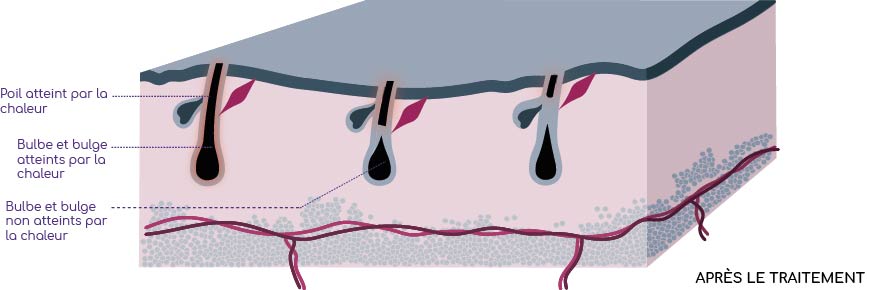back
Permanent Laser Hair Removal in Aesthetics
Laser hair removal works by using a specific laser that emits intense light radiation. This light is absorbed by the melanin in the hair follicles. When melanin absorbs the laser's energy, it is converted into heat, which damages the hair follicles, inhibiting future hair growth.
Types of Lasers
Various types of lasers are used for permanent laser hair removal, including Alexandrite lasers, Nd:YAG lasers, and diode lasers. The choice often depends on the patient's skin color and hair type.
Laser Hair Removal Session
During a laser hair removal session, the aesthetic professional applies the laser to the area being treated. Patients typically wear protective goggles to shield their eyes from the intense light. The session can be somewhat uncomfortable but is generally well-tolerated by most patients.
Series of Sessions
Laser hair removal is not a one-time procedure. To achieve optimal results, multiple sessions are required at intervals of several weeks, as hair grows in different cycles.
Results
The results of laser hair removal vary from person to person, but many patients notice a significant reduction in hair growth after several sessions. A substantial portion of the hair can be permanently removed, although occasional touch-ups may be needed to treat any remaining hair.
Safety
Laser hair removal is generally considered a safe procedure when performed by a qualified professional. Common side effects are temporary and may include redness, warmth, or itching in the treated area.
Benefits
Laser hair removal offers many benefits, including permanent hair reduction, smooth skin, and a reduced need for shaving or waxing.
Pre-Consultation
Before undergoing laser hair removal, it is recommended to consult an aesthetic professional to assess your skin type, hair color, and suitability for the procedure.
Permanent laser hair removal is a popular choice for those looking to get rid of unwanted hair permanently. However, it is essential to consult a qualified professional to discuss expectations, potential results, and precautions before undergoing this treatment.





